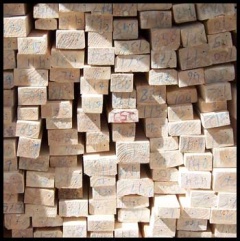Difference between revisions of "Balsa Wood"
| Line 1: | Line 1: | ||
{{Infobox_Forest | {{Infobox_Forest | ||
| − | | image = | + | | image = Balsa wood-1.jpg |
| origin = This table shows only a selection of the most important countries of origin and should not be thought of as exhaustive. | | origin = This table shows only a selection of the most important countries of origin and should not be thought of as exhaustive. | ||
| stowage factor = - m³/t | | stowage factor = - m³/t | ||
Revision as of 10:57, 29 October 2012
| Infobox on Balsa Wood | |
|---|---|
| Example of Balsa Wood |  |
| Facts | |
| Origin | This table shows only a selection of the most important countries of origin and should not be thought of as exhaustive. |
| Stowage factor (in m3/t) | - m³/t |
| Humidity / moisture |
|
| Ventilation | - |
| Risk factors | - |
Balsa Wood
Contents
Description
A wood lighter than cork from Central and South America. Balsa wood is one of the lightest varieties of wood available but it is remarkably strong for its weight. The wood is popular for its use as a light weight contruction material. Particularly hobbyists use the product to make models.
Raw balsa wood has a high moisture content, so it must be dried in a kiln for at least two weeks before it can be used commercially. Afterwards it is usually cut into sheets or round dowels.
Balsa wood is easily damaged by crushing or wetting. It should not be overstowed with heavy goods and kept away from those which are moist or oily.
Full information on this product is in the process of completion.











